
Today I am setting out to tour our Blue Zone, this area of the world where people live longer and no one seems to know exactly why.
I jump in my car and head inward, away from where the word seems to be used as a label to sell longevity in yoga retreats, nights in glampings, bottled water, etc.
The white gravel road I’m on winds its way through yellow pastures and twisting creeks that agonize in midsummer. As I draw nearer I can see a mountain looming in the distance. The vast mountain is Barra Honda National Park and on its slopes sits the community of El Flor de Nicoya. I came here, to the heart of the Blue Zone, to do something that, most likely, many people in the province consider as ordinary and natural as breathing: making tortillas.
I am not going to do it alone. Mrs. Felina Matarrita, 67 years old, and Mr. José Rosales, 75 years old, will be my expert guides. They are an elderly couple who, at the height of the pandemic, stoked the embers of their stove, prepared the cornmeal, and started their tortilla workshop.
Cooking Up a New Beginning
I stop in front of the palapa that Doña Felina and Don José built next to their house. They welcome me with a smile and a refreshment to temper the afternoon heat.
The place is decorated with skillets and ceramic vases from the area. In one corner there is a laminated poster showing all the animals that inhabit the national park just behind the house.
Andrea Carvajal, a member of the Association of Barra Honda National Park Rangers, is also in our company. This association was founded more than 21 years ago and employs people from the park’s neighboring communities as tour guides.
Before working her hands through the cornmeal, Andrea explains how the concept of the tortilla workshop was born.
“The pandemic left us empty-handed. They closed the caverns and before businesses would have to shut down, this initiative was launched and we began to work together and started to offer small packages and recommend people,” Andrea explains.
The initiative she refers to is Nama Tours, a tour operator managed by the association of the tour guides. The idea was born in 2020 to face the challenges brought by the pandemic: the closure of the caverns, the main attraction of the park.
Declining numbers of visitors pushed them to look for other ways to attract tourism in neighboring communities such as Barra Honda, Santa Ana and El Flor.
“So we began to offer lodging and dining services in the area, as well as cultural activities,” Andrea adds.
Among these cultural activities are pottery classes, folkloric dance workshops and what brought me here today: the tortilla workshop.
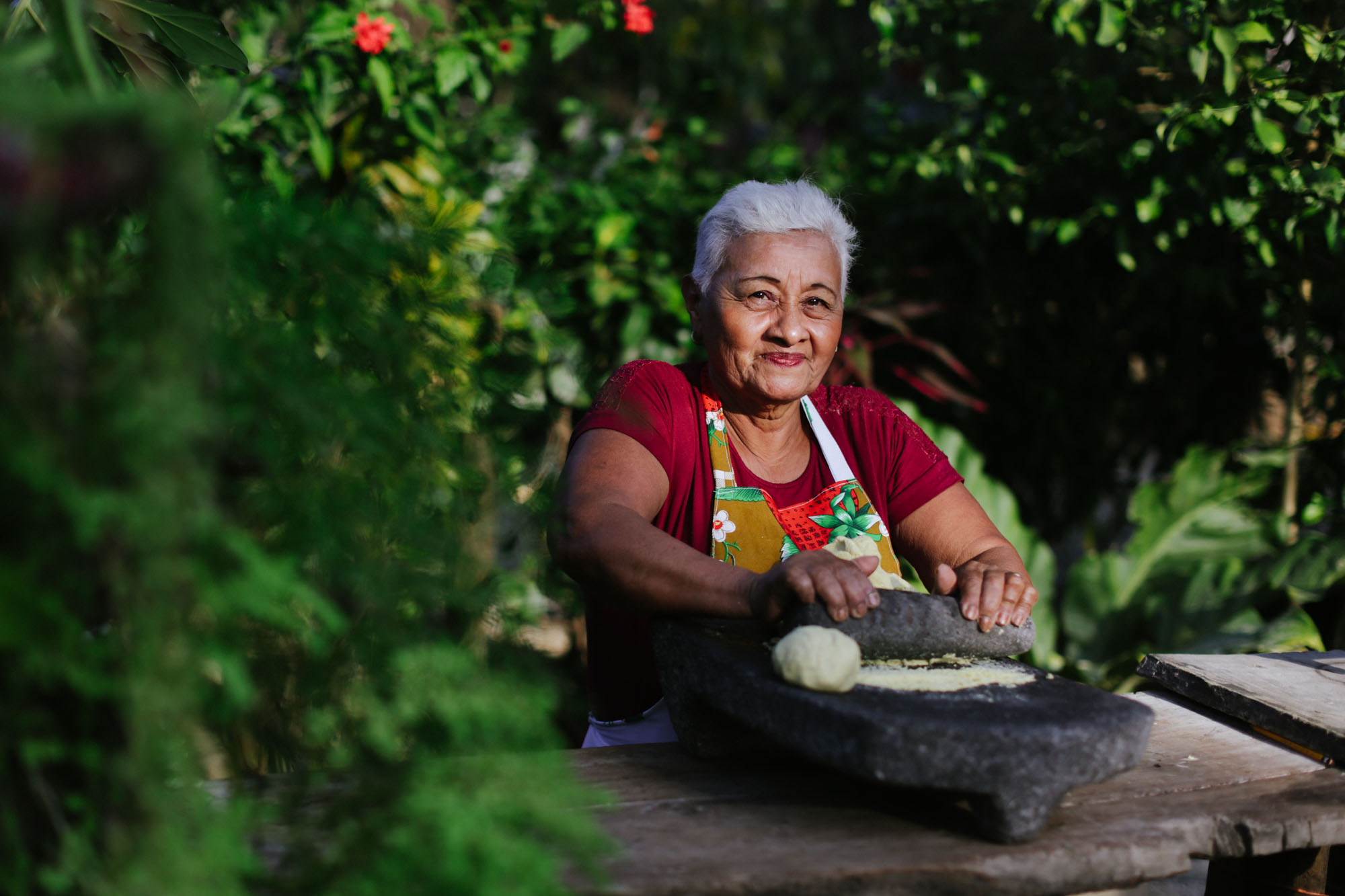
“I have been working for more than 40 years. All my mom and grandparents taught me was to work with corn,” recalls doña Felina Matarrita, aged 67.Photo: César Arroyo Castro
A Master Class on Corn
When Andrea is done speaking, Don José takes over. He was also a national park guide until a heart attack prevented him from continuing with the tours and hikes he led for more than 30 years.
Now he is retired and welcomes tourists here in his own home. He begins to talk about his other passion, farming, with the excitement of somebody important who feels he is being heard. His voice gently hurries along.
I have known this park since I was 15 years old. It wasn’t a park, I used to plant corn and beans there. I’ve known this park for a long time,” he says, pointing behind him.
I listen attentively to his explanation of the importance of protecting native corn seeds and try not to be distracted by the sounds of parakeets and tamarind pods landing on the roof.
“We all farm together in this town, but agriculture is like the lottery because it’s playing with nature,” warns Don José.
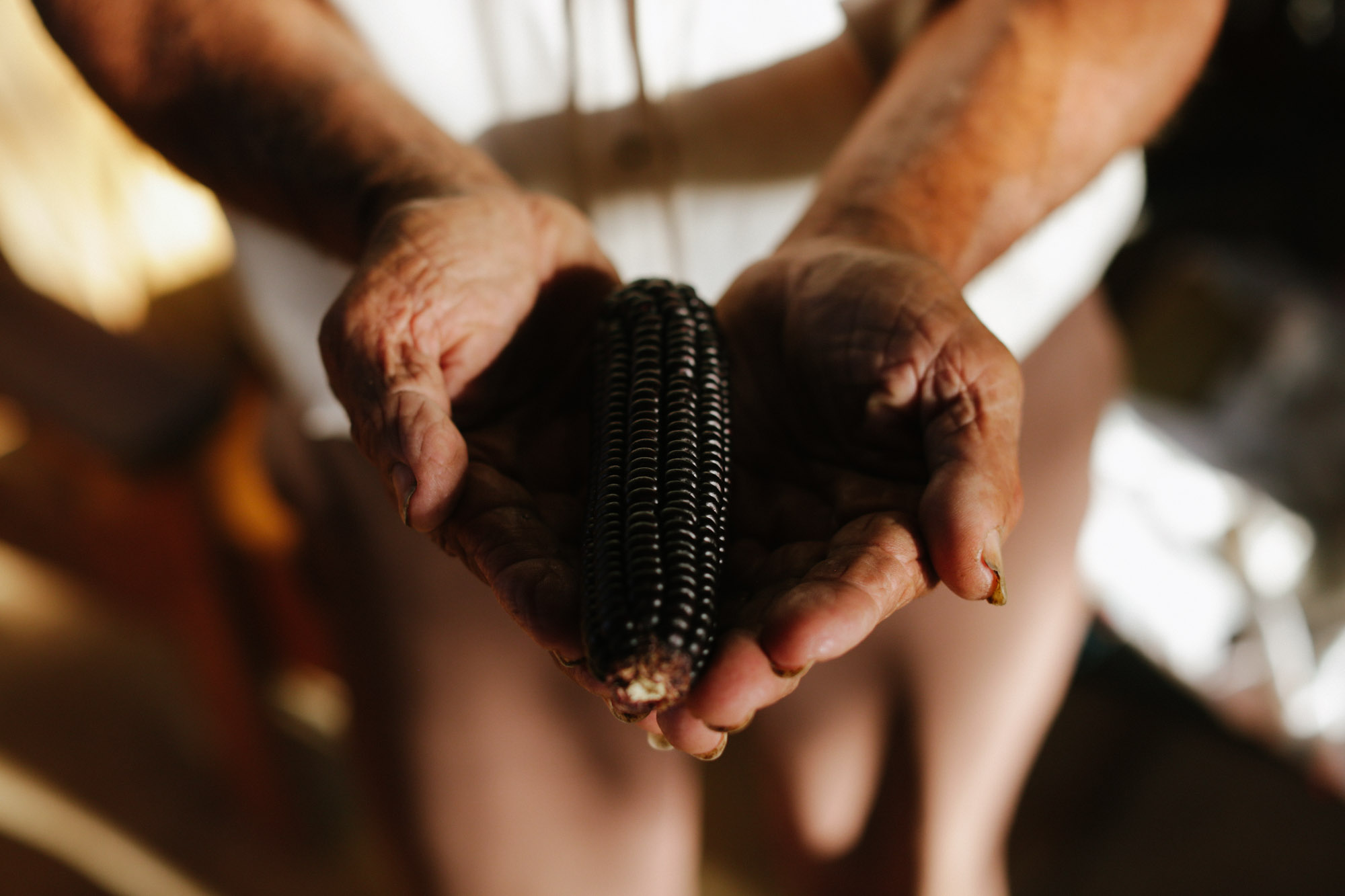
Don José Rosales begins the workshop by talking about the preservation of the native corn seed. His wife, Doña Felina, uses it in her daily cooking.Photo: César Arroyo Castro
He concludes by showing me the seeds that he keeps in empty soda bottles so that beetles won’t nibble at them. He proudly holds his shiny seeds, purple and yellow ones, in his wrinkled palms.
“It’s nice, because we learn from you and you learn from us,” Don José grins as his small black eyes peek out from under the brim of his hat.
Don José and Doña Felina admit that what they enjoy most about the workshop is sharing their knowledge with their visitors. I could go on listening to them forever, but the sun is beginning to slip behind the plains and one lonely teak tree. The shadows begin to stretch and that is the unmistakable sign of coffee time. Let’s get to work!
Kneading as a way of communicating
I follow Doña Felina through the courtyard. Under a large mango tree there is a wooden table with a grinder and a grindstone. Before reaching the kitchen, she stops in front of these rupestral objects and gives me a little demonstration of how they used to grind the corn with a nimble flick of the wrist.
I’ve been working with yellow corn since I was a child. Yellow corn is very nourishing, that’s why we Guanacastecos live a long life,” Felina assures me.
The pursuit of this “Guanacaste longevity” attracts tourism and commerce, but it does not always benefit families like the one of doña Felina and don José.
Family businesses like this one are good examples of how to use the blue zone concept to the benefit of communities, believes Esteban Barboza, a researcher at the National University (UNA) and co-author of the article “Local Singular Reality or Commercial and Tourist Brand?”
“It is not about simply making the local population invisible, but about making them active participants through their authentic ways of life. By authentic I mean what they eat and do every day and see what experience I can gain as a visitor.” Barboza continues: “I think that’s what we need to do to reclaim this idea and not let it be exploited only on a commercial level.
What we are doing today is called ‘experiential tourism‘, it is about getting to know your destination closely through real experiences and via direct contact with its inhabitants.
Andrea believes that they are strategically located for people looking for this type of experience, since it is a transit point between more touristic areas such as Tamarindo, Nosara and the Peninsula.
“Before arriving at their destination, they want to see what’s out there, make the most of their time and leave early the next day for the next destination,” she adds.
Back at Doña Felina’s, she recites all the delicacies she knows to prepare with yellow corn: corn rice, tamales, rosquillas, tanelas, empanaditas, roquetes, chorreadas, yoles, perrereques… With each dish she names, my stomach roars with craving.
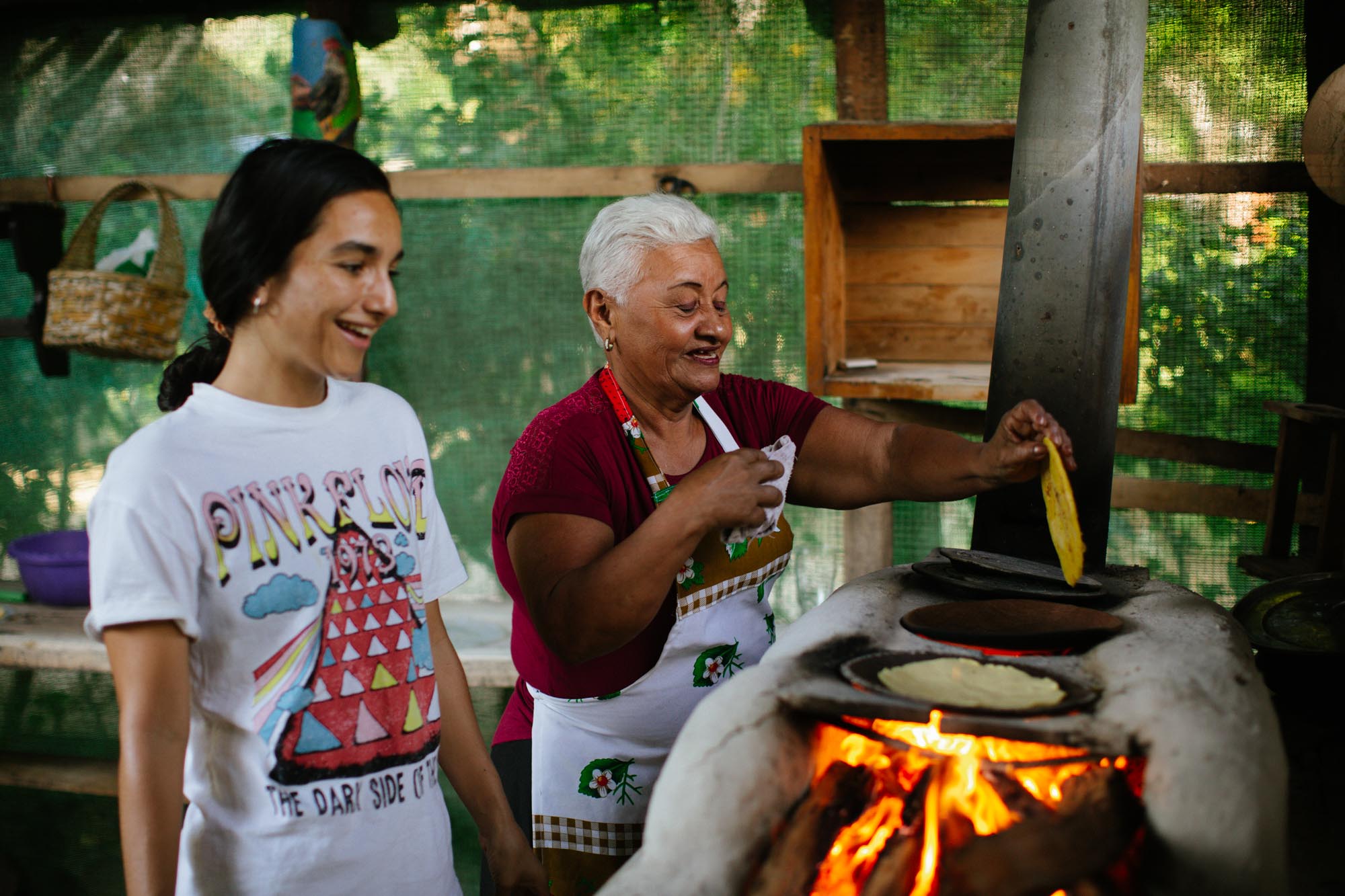
Doña Felina has worked all her life selling corn-based meals. The tortilla workshop, which was created as a way of generating income in the midst of the pandemic, has been the perfect excuse for tourists to step into her kitchen and take part of her daily routine.Photo: César Arroyo Castro
Doña Felina has worked all her life selling all these dishes and continues to do so. The tortilla workshop proposed by the association has been the perfect excuse for tourists like me to slip into her kitchen and take part of her daily routine.
Inside the kitchen there is a large oven where she prepares the rosquillas and tanelas, and just in front fire is spewing from under the clay tortilla pans.
Doña Felina explains to me with granny-like patience how to start patting the cornmeal, first on the table and then in my hand. Her speech is distinctly slow and clear.
In her hands, the cornmeal obediently gives way and yields easily to her orders. In mine, on the other hand, there is an intense battle to make the tortilla more or less presentable. I learn that a tortilla has a front side (the one you pat) and a back side (the one on the table).
When the moment of truth arrives I have to place my tortilla on the clay pan. My hands, which have not endured decades of fire like Doña Felina’s, drop it too soon and it falls on its side with a deformed crimp on one edge. My teacher flattens it out without giving it much thought and a few minutes later asks me to flip it over with a spatula.
Against all odds, and after applying pressure with a damp cloth, my tortilla slowly begins to inflate. I don’t know much about tortillas, but when one of them “rises” it gets a standing ovation at the championships that take place in the gymnasium of the Colegio Técnico Profesional de Corralillo every July 25th.
Doña Felina removes the tortilla, puts it on a plate and invites me to go back to the palapa. A steaming cup of coffee , a bowl of fresh natilla, and some cuajadas sweating under the evening light await us.
No one really knows what the true secret of the Blue Zone is, but speculations are plentiful. What I am sure of is that I could spend the rest of my days here trying to reveal the secret while making tortillas with the mountain and the parakeets in the background.
How to plan your trip?
- Reserve at least one day in advance.
- Groups of four people and up.
- Telephone: 8946-1301
- Waze Address: El fogón de Doña Felina
- Nationals: ¢4.000
- Foreigners: $10
- If you book the workshop through Nama Tours, a guide from the association will provide translation services and will also explain about the blue zone and the properties and origins of the local corn.
- Nationals: ¢5.500
- Foreigners: $18
- If you would like to try this or other cultural experiences, visit Nama Tour’s social media.


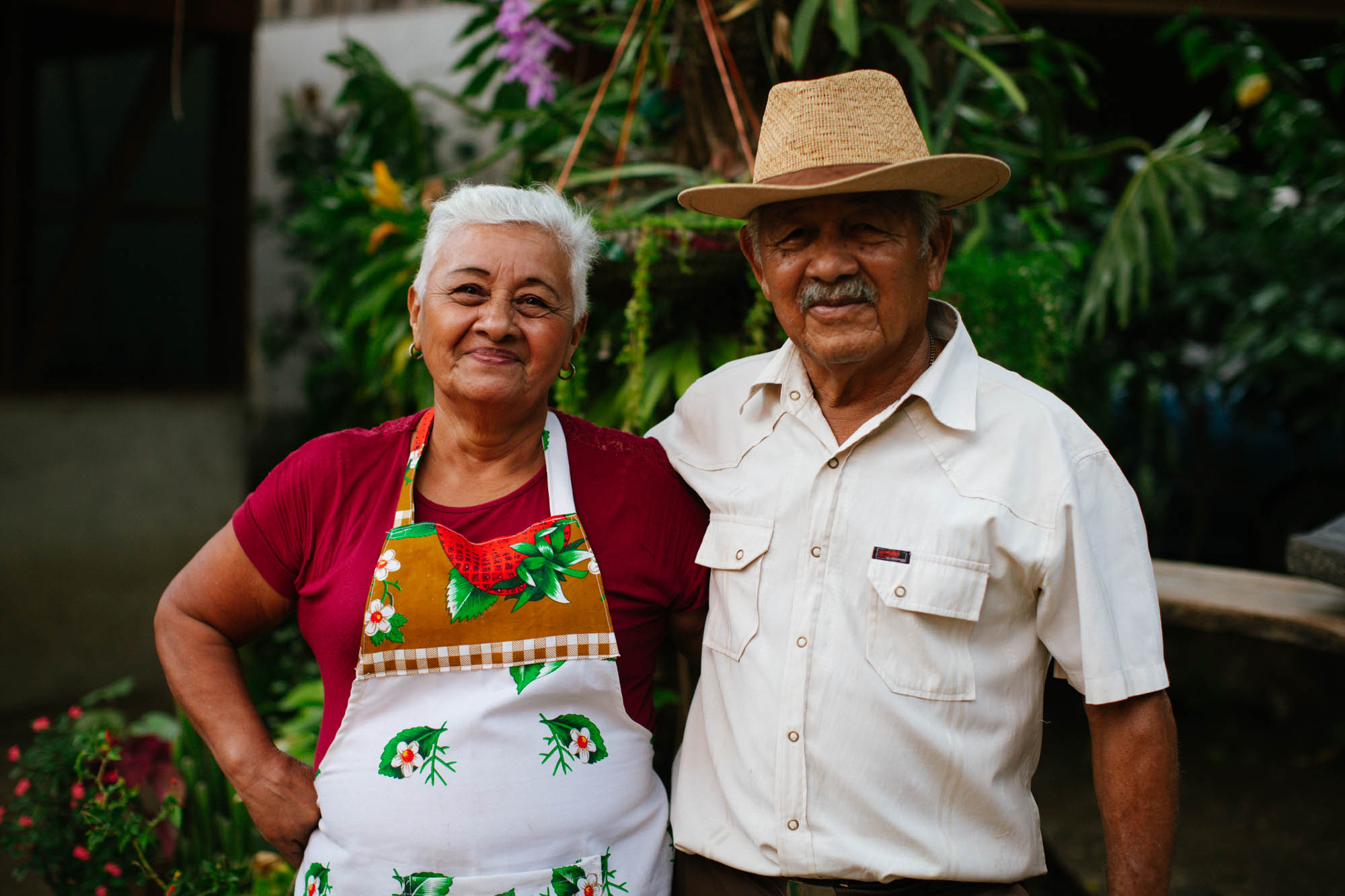

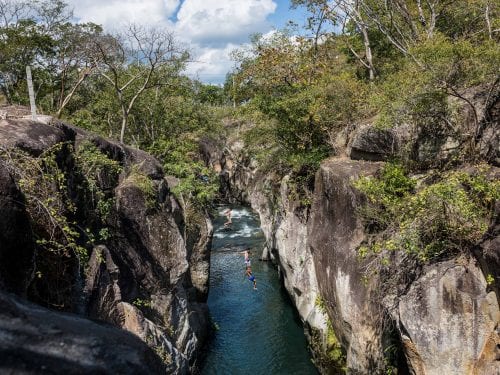
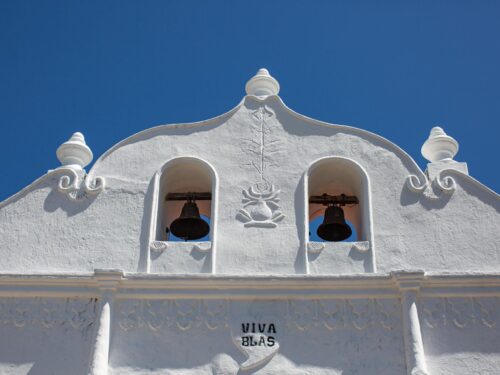

Comments